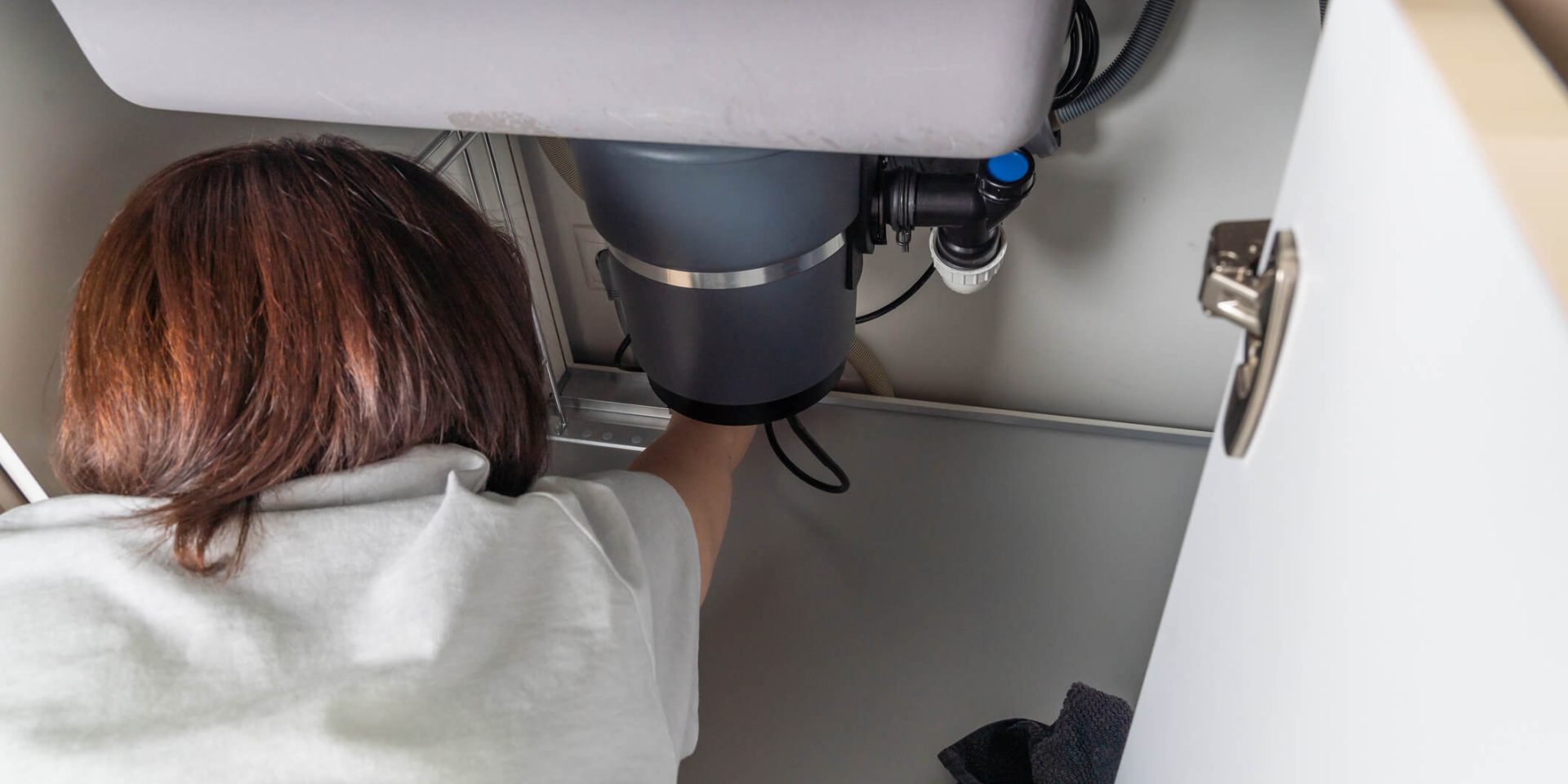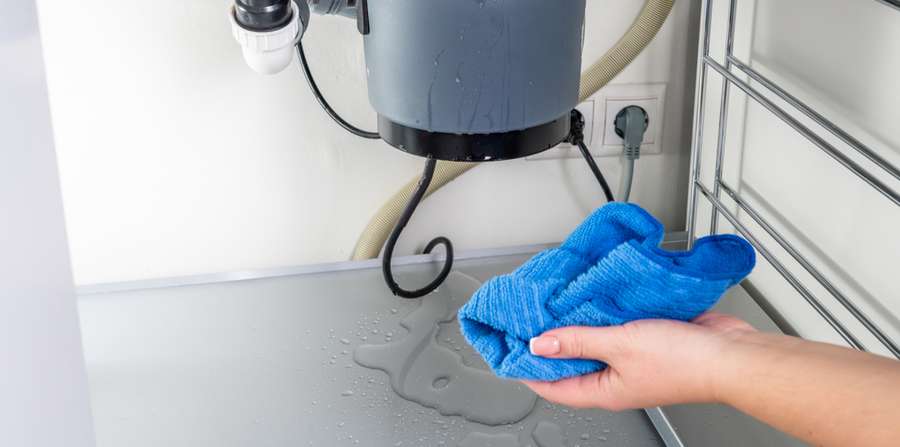Best Methods for Resolving a Leak in Your Garbage Disposal
Best Methods for Resolving a Leak in Your Garbage Disposal
Blog Article
They are making a number of good observations relating to The Handy Guide To Fixing Your Garbage Disposal Leaking in general in this article beneath.

Waste disposal unit are vital kitchen appliances that help in taking care of food waste successfully. Nonetheless, a dripping garbage disposal can be a discouraging and untidy trouble to deal with. Thankfully, numerous leaks can be repaired easily with a few straightforward actions. In this write-up, we will go over how to repair a leaking garbage disposal successfully.
Intro
Waste disposal unit are set up under cooking area sinks and are created to shred food waste into smaller pieces, allowing it to pass through the pipes system conveniently. While these tools are typically trusted, leaks can happen over time because of deterioration, loosened connections, or damages to the device.
Usual Causes of Leakages in Trash Disposals
Worn Seals and Gaskets
Seals and gaskets play an essential duty in stopping water from dripping out of the waste disposal unit. With time, these elements can weaken, leading to leaks around the disposal device.
Loose Connections
The connections between the garbage disposal and the plumbing system can come to be loose with time, causing water to leak out throughout procedure.
Cracks or Holes in the Disposal Device
Physical damage to the garbage disposal, such as fractures or openings in the real estate, can also lead to leaks.
Identifying the Source of the Leak
Before trying to take care of a dripping garbage disposal, it is vital to determine the source of the leak. This can usually be done via visual assessment or by performing basic tests.
Visual Assessment
Check the garbage disposal system very carefully for any type of indicators of water leak. Pay very close attention to areas around seals, gaskets, and link factors.
Checking for Leakages
One way to evaluate for leakages is by running water via the disposal system and looking for any visible indicators of leak.
Devices and Materials Needed for Taking Care Of a Dripping Garbage Disposal
Before starting the repair process, collect the necessary tools and materials, including a screwdriver, flexible wrench, plumbing's putty, replacement seals or gaskets, and epoxy or patching material for repairing splits or openings.
Step-by-Step Overview to Dealing With a Dripping Garbage Disposal
Switch off the Power
Before trying any repair work, make certain that the power to the garbage disposal unit is switched off to prevent the threat of electrical shock.
Situate the Leakage
Determine the exact location of the leakage and determine the reason.
Tighten Connections
Utilize a wrench to tighten any kind of loose links between the disposal device and the pipes system.
Replace Seals or Gaskets
If the leakage results from worn seals or gaskets, eliminate the old elements and replace them with new ones.
Patching Fractures or Openings
For fractures or holes in the disposal device, usage epoxy or an ideal patching product to seal the damaged location.
Examining the Garbage Disposal After Fixing
When the repair work is complete, evaluate the garbage disposal by running water via it to ensure that the leak has been dealt with.
Preventive Maintenance Tips to Stay Clear Of Future Leakages
To prevent future leaks, it is necessary to carry out normal upkeep on your garbage disposal. This includes maintaining it clean, avoiding placing non-food products or tough objects down the disposal, and occasionally checking for leaks or other concerns.
Conclusion
To conclude, taking care of a dripping waste disposal unit is a reasonably simple process that can be finished with basic tools and products. By following the actions detailed in this write-up and exercising preventative maintenance, you can maintain your waste disposal unit in good working condition and avoid costly repair work in the future.
What to Do About a Leaking Garbage Disposal
A leaking garbage disposal often goes unnoticed until you confront a sopping cabinet, a foul-smelling puddle, or an audible drip-drip-drip from the unit. The fix can be frustrating, too, because the leak can stem from a number of components in the system. Fortunately, with a little sleuthing, you can zero in on the leak and—depending on the exact location—stop the icky oozing and repair the component that caused it. Worst case scenario, if it turns out that the garbage disposal must be replaced, installing a new one is a reasonable do-it-yourself task for those with basic plumbing skills. Read on to keep the cash you’d otherwise hand over to a pro.
Prepare to find the leak
Prior to testing the garbage disposal for leaks, unplug it at the wall outlet and turn off the power from the breaker box to prevent electrical shock. Then insert a watertight sink stopper into your sink drain and wipe the unit dry with a clean cloth. In any handy container, mix a few drops of food coloring into a few cups of water, and pour the dyed water onto the sink stopper to help you locate the leak.
Investigate the source
the top, where the disposal meets the sink drain the side, where the dishwasher hose or main drain pipe connects to the disposal or the bottom of the unit Inspect each of these locations while gliding a light-colored rag over the unit; the dyed water will readily show on the rag and reveal the location of the leak. If a leak isn’t immediately apparent, remove the sink stopper and pour a few more cups of dyed water down the sink drain, then check for leaks again. Leaks near the top of the unit are more likely to show themselves while the sink is plugged, while side and bottom leaks are more noticeable while the sink is unplugged.
The metal sink flange that sits directly inside the sink drain is typically sealed around the top with plumber’s putty (a clay-like sealant) and then secured from under the sink with bolts. If the plumber’s putty deteriorates, or the bolts loosen, the flange can no longer form a watertight seal between the sink drain and the disposal—which could cause a leak at the top of the unit.
To reseal the leaky flange, you must first detach the garbage disposal. Start by loosening the screws securing the main drain pipe to the disposal, then loosen the screws in the metal clamp securing the dishwasher hose to the disposal and detach the drain pipe and dishwasher hose from the disposal. Loosen the screws in the mounting ring that connects the disposal to the metal mounting assembly beneath the sink, then pull down the disposal and carefully set it on a clean, dry surface. Loosen the bolts in the mounting assembly with a wrench, then pull down the mounting assembly and set it near the disposal.

I was made aware of that article about How to fix a pretty consistent leak from my garbage disposal from an acquaintance on another web property. Those who enjoyed reading our blog posting plz don't forget to share it. We thank you for reading our article about How to fix a pretty consistent leak from my garbage disposal.
Book Inspection Report this page